"it’s often hard or increasingly expensive to get hold of original 1990s software. So this free application, via which enthusiasts can make their own '90s software, is really useful."
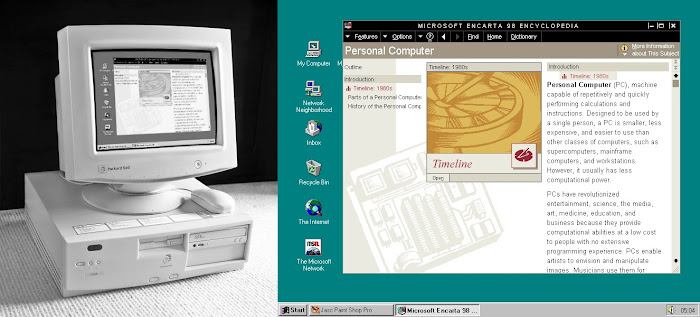
Okay, so you can’t meaningfully get around the Internet with them anymore (well, you can still do a bit of browsing with them). But most of us didn’t use 1990s PCs for web surfing anyway. As late as 1998, only about 9% of UK households had an internet connection, and that figure stayed more or less static over the course of the year. More than double this percentage of households had a computer, but no connection to the web. Meaning that even in early 1999, only about 30% of UK home computer owners used their machines to surf the net.
Those figures changed dramatically in the short period between early ’99 and the end of 2000, with vast ISP uptake, and 1998’s 30% minority of web-using computer owners, increasing to around a 75% majority. So there was a seismic shift in PC users’ behaviour between 1998 and 2001.
As a result, there was a time in the mid 2000s when dealers were virtually throwing away ‘90s PCs. £10, £15… They were just glad to have found someone to carry the things out of their way. As the Internet took over the world, the consensus was that any PC unable to run the mighty Windows XP was basically worthless.
But those throwaway prices are extremely rare today. More and more people are realising the value of twentieth century computers – not just as collectors’ items, but as practical pieces of equipment. Sometimes, even, essential pieces of equipment. There are some old applications you just can’t meaningfully run on a modern PC – even in a virtual machine. And as nostalgia for those old applications heightens, so increases the monetary value of computers that are able to properly reproduce their original activity.
So let’s now flip out of summary mode, and take a more detailed look at why old PCs are making a comeback. Here are ten areas in which they’re either the ONLY solution, or they beat modern PCs for performance, or they serve the role of a modern PC but with some vintage cool thrown into the deal…
GIVING LIFE TO OLD PERIPHERALS

There are many 1990s peripheral devices for which you’re not, realistically, going to get an up-to-date driver. You may, for example, have a really nice old film scanner whose driver was written for a dedicated ISA SCSI card. But you can’t put an ISA card into a modern PC. In fact you’ll struggle to find a PC built after 2000 that has ISA slots. So you’re left with this really good device that you just can’t use anymore. A 1990s PC, built around the same time as your peripheral hardware, solves that problem in one.
RETRO GAMES, DUH!

The charm of 1980s and 1990s computer games is itself an attraction. But combined in a cocktail with heavy nostalgia, it can revive some of the warmest fading memories. The best way to enjoy those old games is on a vintage machine, with its characteristic hard disk chunter and CRT monitor, just like the old days. Even now, simple 1970s games such as Space Invaders, running in a ‘90s version of MS-DOS, can be way too addictive. Among the premium early ‘90s games lurked classics like Return of the Phantom, The Legacy, and Stunt Island. All created for a PC running DOS.
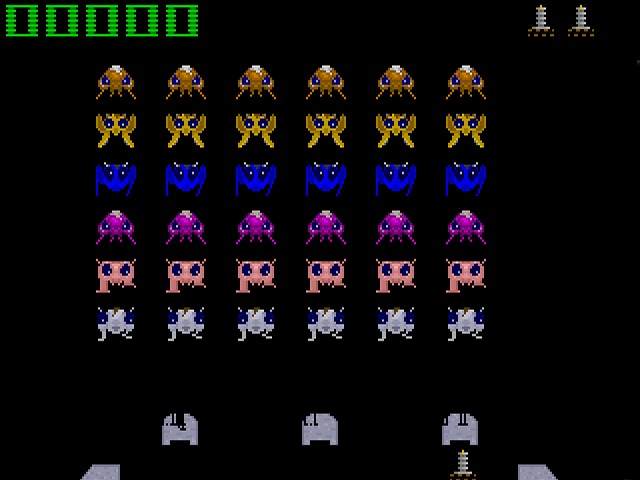
And for a 1990s Windows system?… Tomb Raider II, Actua Soccer 2, War of the Worlds for Windows 95… Not so action-orientated? Okay, what about some of the old Microsoft Entertainment Pack games (Chess, Fuji Golf, Dr Black Jack, Rattler Race, etc)? It’s amazing how much fun some of the ‘90s games still are, given the limited resources of 1990s machines.
But many 1990s games won’t install or run on modern PCs unless you set up a virtual machine environment with software like VirtualBox. And even in VirtualBox, some ‘90s games don’t run as they would on a real 1990s PC. Actua Soccer 2, for example, flitted between different graphics modes. That was the only way fast action could run within the confines of typical system resources in 1997. On a real ‘90s PC, the display compensates for the mode changes. So when the game action starts and the graphics mode switches down to 320px across, you still get a full-screen game. But in VirtualBox on a modern computer or laptop, the graphics mode change is interpreted literally, and the game shrinks into a tiny window. Other ‘90s games run far too fast to play due to the effects of a modern CPU.

In fact, some of the early ’90s DOS games packed up as soon as Windows 95 arrived, because they required a sector of the PC’s memory which Win 95 would itself occupy. There were workarounds, but we can see that the loss of compatibility for ‘90s games began little more than half way through the decade itself. The only real certainty with old games is that they’ll run best on the equipment for which they were designed.
ACCESSING OLD FILES
You might think the great and good of software development would rigidly maintain backward compatibility with their old files, but some don’t. And other software manufacturers have long since gone out of business, so the only way you can meaningfully open the files created with their 1990s software is to actually use that software.
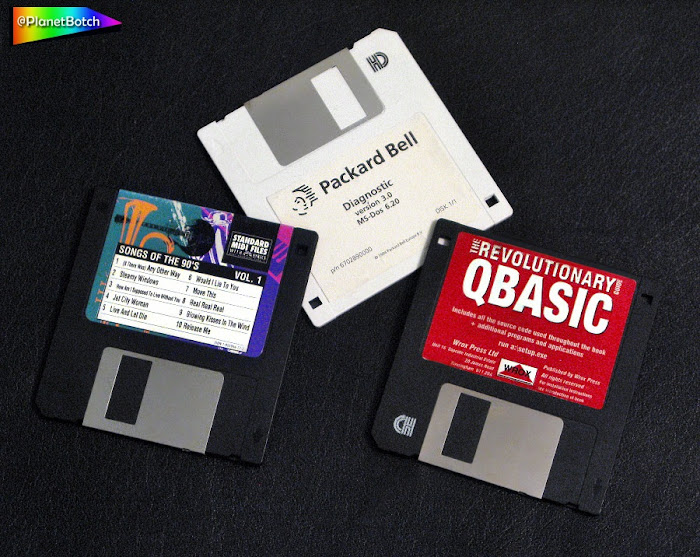
Once again, the question of virtual machines comes up. It’s true that old imaging software, office software, etc, should run in a virtual machine. However, getting the programs into a virtual machine in the first place can be an issue. If their installation was achieved via floppy disk, as it almost always would be prior to the mid ‘90s, you have to consider how you’re going to package the contents of that floppy into a format a modern machine can accept.
Modern PCs and laptops don’t have floppy drives, and most early ‘90s PCs don’t have CD drives – and they definitely won’t have USB. And the old operating system may not have an easily configurable networking capability either. So even if you can make a VM-compatible installation disk image on your old machine, there may be no direct way to transfer it to your new one. The old PC itself is probably by far the easiest way to access those obsolete files.
CREATING YOUR OWN PROGRAMS
Forward from version 5 in 1991, MS-DOS – the core operating system of the ‘90s PC – came with the QBASIC programming environment built in. You could (and still can) use the QBASIC programming language to create anything from games to business accounting systems. And QBASIC featured an integrated help index that even an easily-flummoxed dabbler like me could understand. Even though MS-DOS took a back seat upon the introduction of Windows 95, Microsoft still included QBASIC, and that tradition continued with Windows 98 and Windows ME.

QBASIC produced programs with a retro vibe that’s now sparking increasing interest as its roots vanish further into the past. Part of the reason QBASIC programs have a quaint old-school vibe is that QBASIC resides in the non-graphical environment of MS-DOS. You can create graphics, but QBASIC’s system of doing so is old-fashioned, and that by nature gives the aesthetic design of QBASIC’s programs an old-fashioned look.
QBASIC is a fantastic tool today, because it’s often hard or increasingly expensive to get hold of original 1990s software. 1990s business software, for example, could cost £500 plus in its day, and secondhand dealers know that. They’re not going to let it go for peanuts. So this free application, via which enthusiasts can make their own software, is really useful.

AS A BRIDGE
One of the most overlooked roles for a late 1990s PC is bridge work. That is, bridging the communication divide between an early 1990s or a 1980s machine, and the modern world. Late 1990s PCs typically had a floppy drive, a CD drive, USB, and a mix of ISA and PCI expansion slots. So they can perform as a data-transfer stepping stone between between the old world, which predated CDs, USB and PCI slots, and more recent computers, which have long since dumped floppy disk drives and ISA slots.
RECORDING AND SEQUENCING MIDI INSTRUMENTS
MIDI sequencing was the first significant musical application for a PC.
MIDI data transfer - a system of communication between electronic musical instruments (and subsequently, computers) - was developed for release in the early 1980s. With digital recources extremely tight at that time, the amount of data needing to be processed was kept to a very minimal minimum. So 1990s PCs were easily capable of handling and processing lightweight MIDI data. In fact, an 8086 Eagle “Turbo” PC from as early as 1984 can technically be used to sequence MIDI – as long as the program is small, and runs in MS-DOS so you don’t have to load Windows. But I wouldn’t recommend it as a reliable setup, and the latency would probably be close to jawdropping!

MIDI became the bedrock of the PC music studio, and it still drives many users’ core digital studio mechanisms today. MIDI normally functions as a system of recording and playback. But it doesn’t in itself record sound, handle sound or produce any sound. It’s a set of instructions, that tell instruments that do produce sound, how to produce it. Which notes to play, when to play them, what expressive properties they should have, etc. “Sequencing” just means sending out those instructions. Dictating a sequence of notes or sounds. It’s basically a computer playing musical instruments instead of human beings playing them. And a PC can simultaneously take on the roles of many human musicians. Even an old PC.

In the early ‘90s, home PCs could not realistically handle the resource-hungry task of audio recording, so the actual sound would be recorded externally. But by the late ‘90s, PCs had gained the power to handle both the MIDI info and the sound data. That changed the game, enabling musicians to run entire virtual music studios inside a computer. More convenient and easier to control, but rarely as evocative in sound as the good old raft of outboard hardware and analogue tape masters we had in the ‘90s.
If you want to try some ‘90s-style PC MIDI sequencing, you don’t have to splash out £thousands on vintage instruments. You could get a cheap (but good) 1990s multitimbral tone module like the Korg 05R/W. That will give you a full 16-track sound engine (all instruments including drums) of decent quality, plus built in effects, in a small box, for about a hundred quid as I write. But you’ll need a PC fitted with a MIDI interface, or with a sound card that has a gameport/MIDI output. PCs did not have such things by default in the early and mid ‘90s.
SERVING AS A CONVERSATIONAL PIECE
Fire up your ‘90s Compaq just before guests arrive, and you’ll probably find that at least one tech-minded soul will be thoroughly mesmerised by that quaint 640 x 480 CRT display and your spectacularly retro Windows 3.1 operating system – complete with “Flying Windows” screensaver.
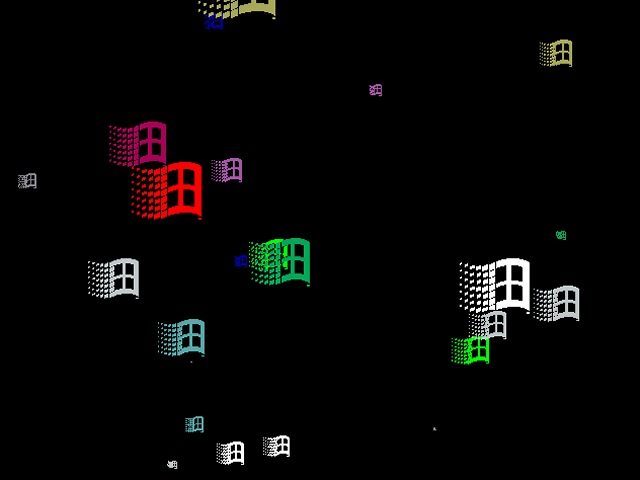
“Flying Windows” animated according to your CPU speed, so anything newer than the very earliest Pentium 1 processor (60MHz) would run the sequence a bit fast. You ideally want a 486, with around a 50MHz CPU. That gets your Flying Windows floating in a very therapeutic drift, which will attract the gaze of your guests in no time.
WORD PROCESSING
Word processing capability extends right back to the very oldest PCs, so ‘90s machines have no problem with it at all. Even if you don’t have word processing software for your old PC, you can get right back into the '90s zone by installing Microsoft Word 5.5, which is now "abandonware" and can legally be downloaded for free (note that this is a direct Microsoft download link and the download will start immediately if you hit it).
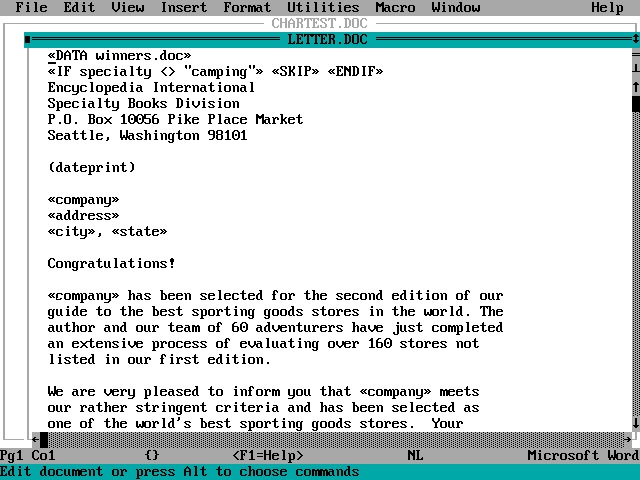
RUNNING A CUSTOM DATABASE SYSTEM
If you’re lucky enough to have dBase or FoxPro installed on your ‘90s PC, you can have some fun building database management tools that will process and handle your stored database any way you choose. Make your own interface, perform calculations at your whim… I say “lucky enough”, incidentally, because these were not cheap programs, and they were much more the preserve of businesses than home users. Enthusiasts did, however, buy them, and even in 2020 they make very nice toys on a 1990s PC.

Although these (originally DOS-based) programs were very firmly purposed towards database (and not spreadsheet) management, it was actually Microsoft Excel, the spreadsheet utility, that replaced many of their popular smaller scale uses. Especially after Visual Basic was integrated into Excel in 1993. An Excel sheet would take a moderate database, allowing quick search, instant calculation and reporting, and when bought as part of the Microsoft Office package, worked out considerably cheaper than both FoxPro and dBase. Indeed dBase cost as much as the entire MS Office suite, which included all of the office utilities.
And if you don’t have a ready made database system? You can actually make your own in QBASIC. The image just above comes from one such program. It was an open secret that for modest database needs, QBASIC could actually do most of the things dBase could do.
PROVIDING AN ESCAPE HATCH FROM THE ALL-SEEING EYE
One of the most wonderful things about using a machine with low resources, no onboard camera, no onboard mic, etc, is that it can’t be commandeered by big tech as a means to spy on you. So many of the tech devices we buy today have some kind of spying mechanism built into them. It’s really liberating to disappear into a world where everything you do is your business, and your business alone.
Of course you can run old games via the web, on a new computer, or a phone. But you know that when you do, someone is collecting information about you. You don’t really know what they’re recording about your behaviour, or what they’re doing with the info. A 1990s PC, however, frees you from that Orwellian oppression. Privacy is freedom. And freedom is good.